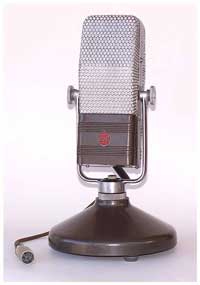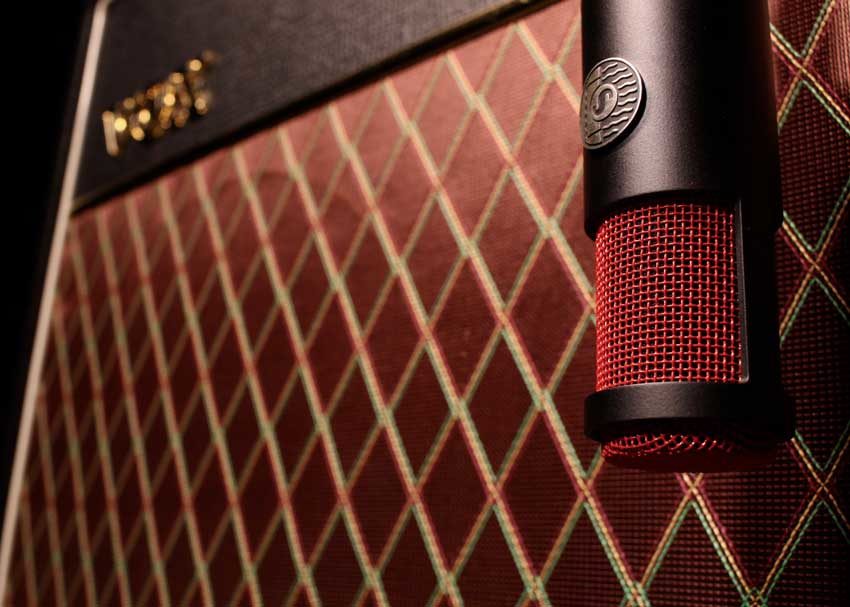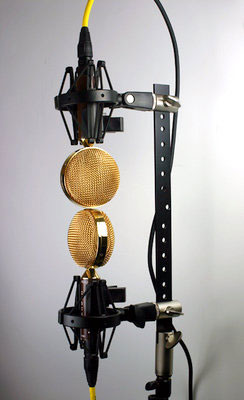Attention, home studio musicians: If you’ve already invested in a large-diaphragm condenser mic or two, perhaps it’s time to add a ribbon microphone to your bag of studio tricks! Here’s a beginner’s guide to ribbon microphones and how you can use them to get that smooth, “vintage-style” sound you’re going for.
Ribbon Microphones, Yesterday and Today
Back in the 1930s, ’40s and ’50s, before condenser mics rose in popularity, classic ribbon microphones from the likes of RCA and Coles were ubiquitous in radio booths and recording studios. Ribbons fell out of favor for a few decades, as condensers from Neumann and AKG and dynamics from Shure and Sennheiser became the go-to recording tools. The early 2000s saw a ribbon revival, with plenty of affordable options thanks to overseas manufacturers, and delicate ribbons replaced by stronger materials. While most modern ribbon mics are more durable than their older counterparts, they usually retain two qualities that were hallmarks of those classic mics: 1) a bidirectional figure-8 pattern that picks up sound well from the front and back of the mic while rejecting sound to either side, and 2) a gentle high-frequency roll-off that can take the “edge” off harsher-sounding sources and evoke a smooth, “vintage” quality.
How to Use a Figure-8 Pickup Pattern
As a rule, ribbon microphones pick up sound equally from both the front and back of the ribbon element, while rejecting sound to the left and right. You get two distinct “lobes,” or areas of pickup, toward the front and back of your mic, with a “null,” or dead area, to the sides. Each lobe has a tighter pattern than the cardioid-pattern microphones you might be used to.
Figure-8 mics really shine when they’re set up as a stereo pair in a Blumlein configuration. You can also pair one figure-8 mic with a cardioid mic as part of a middle/side stereo configuration. Bi-directional mics can come in handy if you want to set up a single mic and record two sources onto one channel — for example, with a show host and guest each addressing their own side of the mic. Use the mic’s “null” to your advantage, aiming the null at a noise source you don’t want to capture. If you’re recording solo vocals on a ribbon, try a reflection filter like the Aston Halo to get a more intimate sound on the voice in front without picking up too much from the rear.
Ribbon vs. Condenser Microphones
While condenser microphones are generally known for their high-frequency extension that can add “air” and crisp detail and definition to a source, ribbon microphones generally exhibit a gently rolled-off frequency response that we perceive as “rounded” and “smooth.” This tailored frequency response can soften a harsh-sounding source.
For example, if you’re recording violin, and you don’t want to hear every scrape of the bow, a ribbon mic can help round off those rough edges. Or if you’re recording a voiceover and there’s a lot of hissy sibilance going on, a ribbon microphone can help you tame it without diving for the EQ or de-esser. If you’re recording acoustic guitar, and a condenser mic just sounds “too clean,” with a sharp focus on all those higher-frequency harmonics and overtones, a ribbon mic may offer you a more natural, full sound. And ribbon microphones are often great for recording guitar cabinets — you can get the mic right up on the speaker cone and get a nice, creamy sound that’s not too bright.

Frequency response of a Cascade Fat Head ribbon mic. See that nice soft rolloff after 6000 Hz?
Pick the Right Preamp
Passive ribbon mics generally require more gain than condensers, so you’ll want to make sure you’ll plugging them into a preamp that can deliver enough gain without adding too much noise. Your secret weapon in this battle is the Cloud Microphones Cloudlifter — in-line preamp that adds up to +25 dB of transparent gain before you plug into your usual interface, preamp or board. The Cloudlifter comes in stereo if you’ve got your ribbon mics set up in a Blumlein stereo configuration — a great way to capture a piano or acoustic guitar in all its glory. Or, plug your mics into a 2-channel mic pre with plenty of clean gain, like the Black Lion Auteur MKII. But remember: unlike condenser mics, passive ribbon microphones don’t use phantom power. In fact, phantom power can damage some ribbons — so always make sure your mixer or interface has phantom turned OFF before you plug in your mics!
Shop ribbon microphones on zZounds




